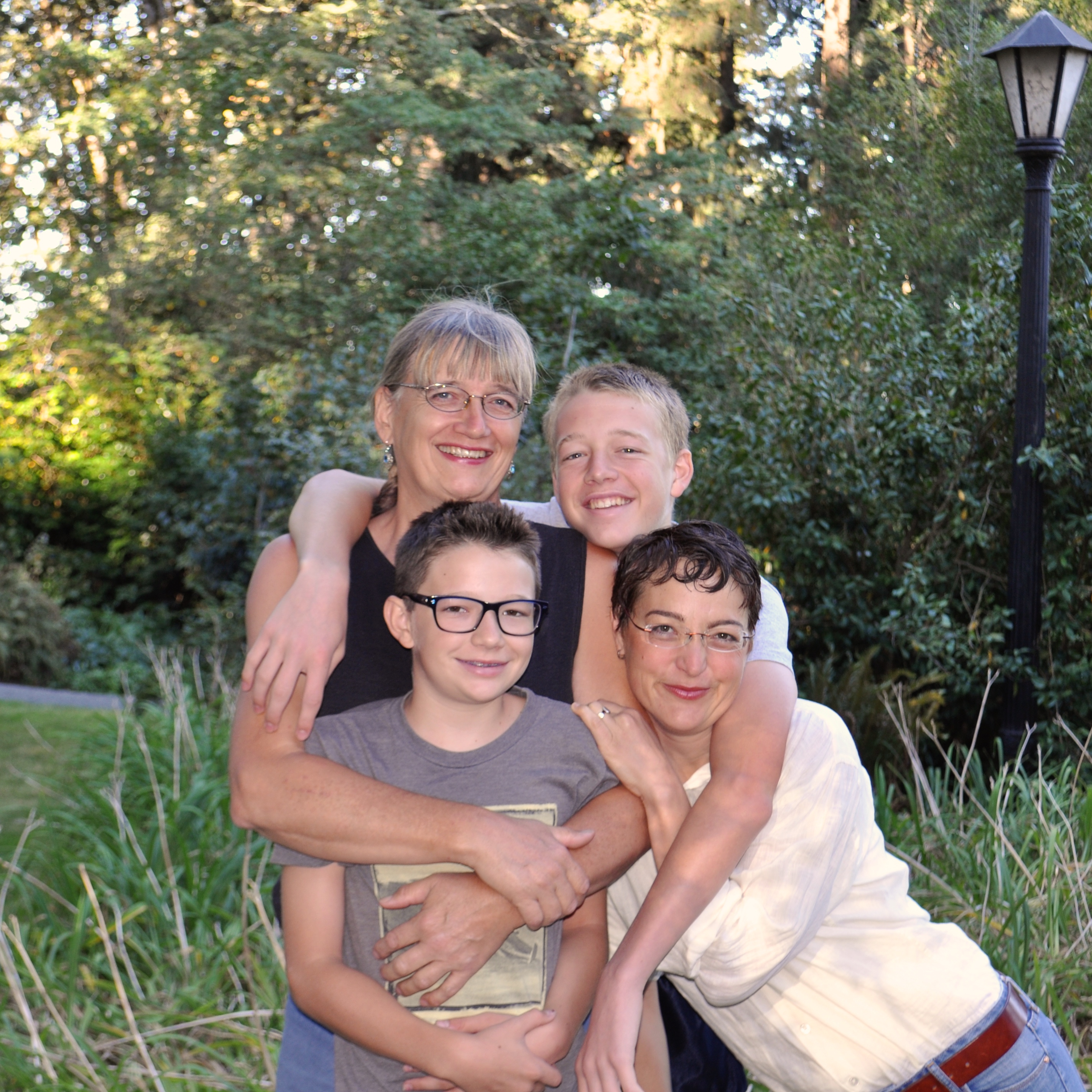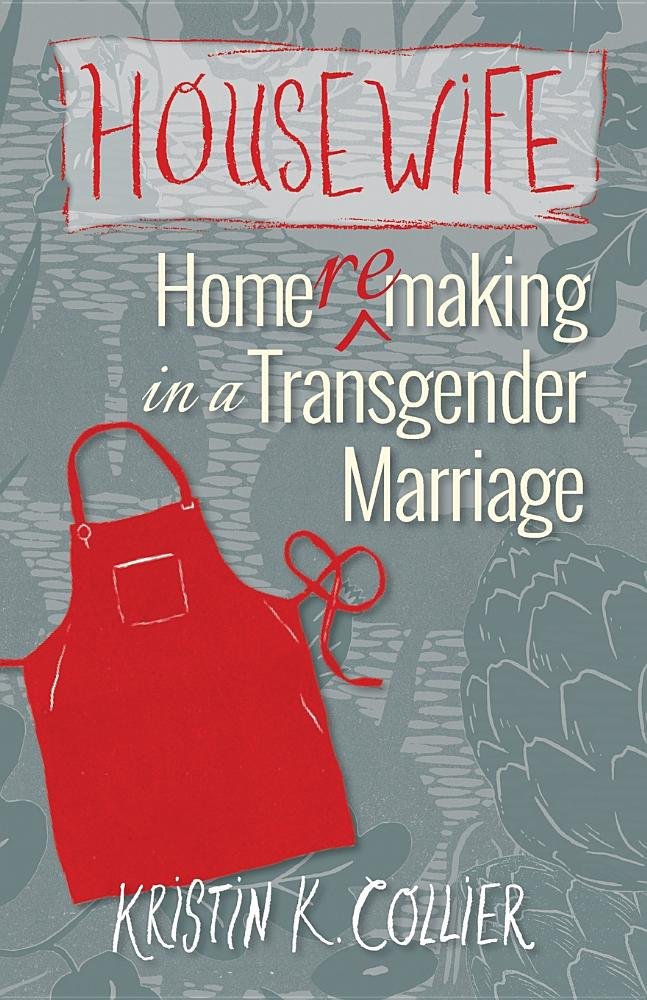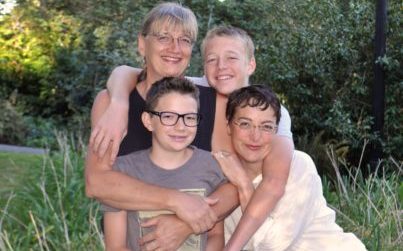When Kristin K. Collier married her husband two decades ago, she had no idea he’d become her platonic female live-in co-parenting partner and they’d manage to find peace and joy in such an unusual situation. Today she tells us her story;
Our Transfamily in Five (or Six) Part Harmony
“I love eating dinner together with you guys,” said my sixteen-year old son, Trinidad. “Richard, thank you so much for cooking.” My sweetheart nodded and smiled as Seda, my parenting partner, got up to clear her plate.
“I have an article to write tonight, so can you three handle the dishes?” I asked the boys and Seda.
“I’ll get the laundry if you boys can get the dishes, and we’ll join whoever finishes first!” suggested Seda.
“Deal!” said my youngest son, Sam. He got up to put away the food.

How We Made Harmony
It’s pretty sweet living under one roof together with these dear people I call family, but I never would have guessed it would turn out like this when I married a Wyoming rancher’s son (now a woman named Seda) at the age of eighteen. When I’m teaching Compassionate Communication workshops, people often come up to me afterwards and ask, “What is a parenting partner and how do I get one?”
“Careful what you wish for!” I tell them with a wink. The constellation of our family is unique and harmonious, and that is really no surprise when you consider the effort that went into our communication during Seda’s transition from male to female. It took radical honesty, empathy practice, and a belief in the best of each and every one of us to create the family we enjoy today. And I’d warrant that those elements could improve relations in any family!
Radical and Responsible Honesty
Saying what you feel even when others may not like it is radical. Owning your feelings and needs and noting your objective observations while making doable and considerate requests is responsible.
When Seda and I muddled through confusion early in her transition, we expressed ourselves regularly with responsible honesty to stay current with one another and to process our emotions. This communication brought us closer and helped us problem-solve creatively.
A Practice in Empathy
If you are not already skillful in empathy, you might check out Marshall Rosenberg’s Nonviolent Communication (NVC) model. Whatever model you choose, be sure that it contains an element of focused presence, curiosity, and a desire only to connect (not heal, calm someone down, or get your way).
I needed a lot of empathy as our family structure changed. I set a regular, once a week empathy date with a skilled friend where we heard and supported each other without judgment or advice. Having met my own needs, I was then emotionally available to give Seda and the boys empathy, too.
Believing the Best in One Another
It sounds easy, but it’s hard to see the best in each other when we’re triggered or frustrated! Having a regular empathy practice and using radical and responsible honesty helps foster understanding and spaciousness so that we are our best selves and more likely to see the same in others, even when times are tough.
Sometimes, we just have to come back to an intention over and over to see the best in one another. My kids go through big hormonal shifts now that they are teenagers, Richard has kicked his addiction to both alcohol and cigarettes, and I am wading my way through perimenopause. We all have lots of opportunities to practice, and let me tell you, it’s worth it!
How Our Five (or Six) Part Harmony Came Together
When I hear my kids initiating gratitudes about their family, I know that the lifestyle we’ve cultivated is paying off intergenerationally. Seda and I never swore we would stay together; we were just such good friends it didn’t make sense to split households. We also didn’t relish the idea of seeing our kids only half the time.
Ten years ago, I developed a practice in Compassionate Communication as Seda transitioned across gender lines, and we realized we were no longer attracted to one another – something that required rigorous honesty to process. Over the years to come, we built a wing for Seda onto our so we both had space to explore other romantic relationships.
I met Richard when I put an ad on Craigslist for an “out of the box” partner and happily landed this extraordinary man who is an artist and professional chef. He enjoys sports and attends almost every one of our kids’ games. We all play soccer and football together, too. Richard’s son joined us over Christmas break, and we were able to make two teams of three!
Our family of five has weathered many challenges together over the past few years, but every day we seem to get more solid. The kids practice cooking with Richard. Seda teaches them how to build and design, and from me they learn how to grow food and compassion. Although I remember being reluctant to embark on this family remodel, I now would not have it any other way!

Kristin K. Collier is an educator and writer from Eugene, OR. Her words have appeared in The Sun magazine, and her poetry is a frontispiece for Michael and Kathleen O’Neal Gear’s People of the Sea. She has been teaching Compassionate Communication since 2004. Collier and her spouse were featured in NPR’s program, Snap Judgment, in their Valentine’s 2012 edition. As well, Collier has been urban farming since 2005 and was a keynote speaker for the Eugene Permaculture Gathering in 2007. Her book; Housewife: Home-remaking in a Transgender Marriage is available on amazon.


